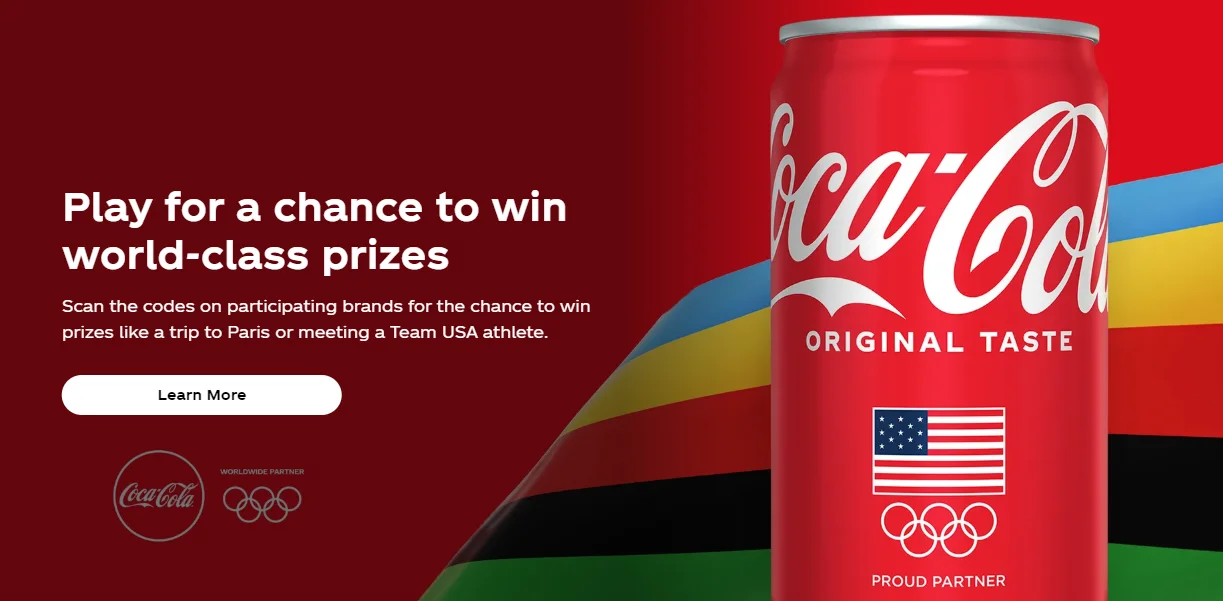The 4 Ps of Marketing: Definition, Role, and Questions to Consider

The 4 Ps of Marketing, introduced by E. Jerome McCarthy in 1960, stand for Product, Price, Place, and Promotion. These elements are essential for effective marketing. Popularized by Philip Kotler in his textbook “Marketing Management”, the 4 Ps framework has become a foundational tool in marketing education and practice.
This article will provide you with a comprehensive understanding of the 4 Ps of Marketing, including their definitions, importance, examples, and how to utilize them to create the perfect marketing plan effectively.
What are the 4 Ps Of Marketing? Definition, Example, Role, & Questions to Consider

The 4 Ps of Marketing form a fundamental framework for developing marketing strategies, encompassing four key elements essential for bringing a product or service to market:
- Product: The good or service that meets customer needs and wants. It includes considerations of features, quality, design, and branding.
- Price: The amount of money customers must pay to acquire the product. Pricing strategies take into account production costs, competitor prices, and perceived value.
- Place: The distribution channels used to deliver the product to customers. This includes locations such as online platforms, physical stores, and intermediaries like wholesalers.
- Promotion: The activities and strategies used to raise awareness and persuade customers to buy the product. This encompasses advertising, public relations, social media marketing, and sales promotions.
1. Product
The Product in the 4Ps of Marketing is the foundation of your marketing strategy. It’s the tangible good or intangible service you’re offering to customers, aiming to fulfill their needs and desires.
What does “Product” include?
- Shape, size, color: Product design should be attractive, recognizable, and suitable for the target customer.
- Quality: The product must be of good quality, meeting safety and durability standards.
- Features: The product needs unique features that meet customer needs and outperform competitors.
- Brand: A strong brand creates differentiation and customer loyalty.
- Packaging: Packaging not only protects the product but is also an effective marketing tool.
- Accompanying services: Additional services like warranty, maintenance, and customer care are also important parts of the product.
The Role of Product in Marketing Mix
- Creating value: Good products create value for customers, meeting needs and bringing satisfaction.
- Differentiation: Unique products help businesses stand out from competitors.
- Building loyalty: High-quality products and good service build customer loyalty.
- Increasing revenue: Attractive products draw customers and increase business revenue.
Example of Product in Marketing Mix:
A smartphone is not just a communication device but a technology product with many features, such as photography, videography, gaming, and internet connectivity. To succeed, phone manufacturers must constantly innovate, create unique features, and meet user needs.
Some questions to consider when working on “Product”
- Who is your target customer? What are their demographics, psychographics, behaviors, and needs?
- What problem does your product solve? How does it fulfill a desire?
- What are the core features and benefits of your product? What makes it stand out?
- What is the product roadmap? What are the short-term and long-term goals for the product?
- How will you measure product success? What key performance indicators (KPIs) will you track?
2. Price
Price in the 4Ps of Marketing refers to the amount of money customers must pay to acquire a product or service. It encompasses various strategies and considerations, including cost-based pricing, value-based pricing, competitive pricing, and psychological pricing.
What does the pricing strategy include?
- Cost-Based Pricing: Setting prices based on the product’s production cost, plus a desired profit margin.
- Value-Based Pricing: Determining price based on the perceived value of the product to the customer.
- Competitive Pricing: Aligning prices with competitors to match or undercut them.
- Psychological Pricing: Using pricing tactics to influence customer perception (e.g., odd-even pricing, prestige pricing).
- Dynamic Pricing: Adjusting prices based on demand, competition, or other factors (common in e-commerce).
The Role of Price in Marketing Mix
- Revenue Generation: As the only revenue-generating element, price is vital to a business’s financial health.
- Customer Perception: Price significantly influences how customers perceive a product’s value and quality. A higher price often implies higher quality, while a lower price might suggest a budget-friendly option.
- Competitive Advantage: Pricing can be a powerful tool to gain a competitive edge. Strategies like penetration pricing (low initial price) or price skimming (high initial price) can help a business differentiate itself.
- Profitability: Price directly impacts a company’s profit margin. Careful pricing is essential for achieving desired profit levels.
Example of Price in Marketing Mix
It’s important to note that Coca-Cola often combines these strategies to create a comprehensive pricing approach. For example, they might use value-based pricing for their core products while employing penetration pricing for new variants or markets.
By carefully considering these pricing strategies and adapting them to different market conditions, Coca-Cola has successfully maintained its position as a global beverage leader.
Some questions to consider when working on “Pricing”
- What is the perceived value of your product or service? How does it compare to competitors?
- What pricing strategy aligns best with your business goals? (e.g., penetration, skimming, value-based, cost-plus)
- How can you differentiate your pricing strategy from competitors?
- How does price influence customer perception of product quality?
- What is the breakeven point for your product or service?
3. Place
In the marketing mix, “Place” refers to all the activities involved in getting your product or service from the production line to the final customer. It encompasses distribution channels, inventory management, and ensuring accessibility for your target market.
What does the “Place” in the marketing mix include?
-
Distribution channels: The paths a product takes to reach customers. This includes:
- Direct channels: Selling directly to consumers (e.g., online stores, farmers’ markets).
- Indirect channels: Using intermediaries like wholesalers, retailers, or distributors.
- Hybrid channels: Combining direct and indirect channels.
- Inventory management: Ensuring the right amount of product is available at the right time.
- Logistics and transportation: Efficiently moving products from the producer to the consumer.
- Physical store location (for brick-and-mortar stores): Selecting optimal locations based on customer demographics and accessibility.
- Market coverage: Determining the desired level of market penetration.
The Role of “Place” in Marketing Mix
- Accessibility: Making the product readily available to customers.
- Efficiency: Optimizing the movement of goods from the producer to the consumer.
- Customer satisfaction: Meeting customer expectations regarding product availability and location.
- Competitive advantage: Gaining a competitive edge through effective distribution channels.
Example of “Place” in Marketing Mix
Apple is a prime example of a company that has mastered the “place” element of the marketing mix. Here are their distribution channels:
- Apple Retail Stores: These flagship stores offer a premium shopping experience, product demonstrations, and technical support.
- Online Store: Apple’s online platform provides direct access to its entire product line, offering convenience and customization options.
- Authorized Resellers: Partnerships with authorized retailers expand Apple’s reach to a wider audience, particularly in regions with limited Apple Store presence.
Some questions to consider when working on “Place”
- Which distribution channels align best with your target market and product?
- How do your customers prefer to purchase your product? Direct, indirect, or a combination?
- What are the costs and benefits of different distribution channels?
- How can you ensure consistent product availability across channels?
- How can you optimize the transportation and storage of your product?
4. Promotion
Promotion is the fourth P in the marketing mix and involves communicating the value of a product or service to customers. It’s about creating awareness, generating interest, building desire, and ultimately driving action. For example, using tools like Picnob Instagram viewer can be part of a social media marketing strategy to enhance brand visibility by leveraging Instagram’s vast user base.
What does the “Promotion” in the marketing mix include?
- Advertising: Paid forms of non-personal communication through various media (TV, radio, print, online).
- Public Relations (PR): Building positive relationships with the media and the public.
- Sales Promotions: Short-term incentives to encourage purchase (discounts, coupons, contests).
- Personal Selling: Direct communication with customers to persuade them to buy.
- Direct Marketing: Personalized communication with customers (direct mail, email, telemarketing).
- Digital Marketing: Online marketing activities (SEO, social media, content marketing, email marketing).
The Role of “Promotion” in Marketing Mix
- Building Brand Awareness: Introducing the brand and its products to the target audience.
- Generating Interest: Creating excitement and curiosity about the product or service.
- Providing Information: Communicating product features, benefits, and unique selling points.
- Persuading Customers: Convincing potential customers to make a purchase.
- Building Customer Relationships: Fostering loyalty and repeat business.
Example of “Promotion” in Marketing Mix
Nike is a prime example of a company that excels in promotion.
- Advertising: Nike is famous for its inspiring and emotion-driven advertising campaigns featuring world-class athletes.
- Public Relations: Nike leverages sponsorships of major sporting events and athletes to generate positive media coverage.
- Sales Promotions: Nike offers discounts, limited edition products, and loyalty programs to incentivize purchases.
- Personal Selling: While primarily focused on wholesale and retail channels, Nike employs a sales force to manage key accounts.
Some questions to consider when working on “Promotion”
- What are the specific objectives of your promotion? (e.g., increase brand awareness, generate leads, drive sales, build customer loyalty)
- How will you measure the success of your promotion?
- What is your target return on investment (ROI) for the promotion?
- Which promotional channels will you use? (e.g., advertising, public relations, sales promotions, personal selling, direct marketing, digital marketing)
- How will you integrate different promotional channels for maximum impact?
Other Marketing Mixes
The five Ps
The five Ps consist of product, price, place, promotion, and people.
Today, numerous marketers opt for the five Ps instead of the traditional four Ps as it places emphasis on the involvement of both customers and staff in the marketing process. Common factors taken into account encompass customer behavior, product experience, and overall satisfaction with the business.
The seven Ps
The seven Ps encompass product, price, place, promotion, people, processes, and physical evidence.
Expanding upon the foundation of the five Ps, the seven Ps incorporate additional aspects such as the processes shaping the customer experience and the tangible evidence required by the target market to make purchasing decisions. Processes may entail the specific customer service procedures associated with a product, while physical evidence can include websites or store displays aimed at helping the target market visualize themselves utilizing the product.
The five Cs
The five Cs include customer, company, competition, collaborators, and climate.
In certain aspects, the five Cs address many of the same considerations as the four and five Ps, yet with an increased focus on external elements, including potential collaborations and competitive analysis.
Moreover, while “climate” pertains to the social, political, and economic environment surrounding the market, “customer” relates to the target market and their experience. “Company,” on the other hand, denotes the company’s position and accessible resources within the marketing framework.
Marketing Mix Famous Examples
Starbucks: A Marketing Mix Masterclass
Starbucks’ success story is a testament to the power of a well-crafted marketing mix. Let’s delve into how they utilize the 4 Ps to create a unique and powerful brand experience:
Product:
- High-Quality Coffee: Starbucks emphasizes premium, ethically sourced coffee beans and handcrafted beverages to differentiate itself from mass-produced coffee.
- Diverse Menu: They offer a wide variety of coffee drinks, hot and iced teas, seasonal specialties, and pastries to cater to various taste preferences.
Price:
- Premium Pricing: Starbucks positions itself as a premium coffee experience, justifying its higher prices compared to competitors.
- Value Perception: The focus on quality, atmosphere, and convenience contributes to a perceived value that justifies the price point.
- Rewards Program: The Starbucks Rewards program incentivizes loyalty by offering points redeemable for free drinks and merchandise, creating a sense of value for frequent customers.
Place:
- Strategic Locations: Starbucks prioritizes high-traffic areas like office buildings, shopping malls, and busy streets to ensure convenient accessibility.
- Ambiance: Their cafes offer a warm, inviting atmosphere with comfortable seating, free Wi-Fi, and friendly service, encouraging customers to linger and enjoy the experience.
- Multiple Channels: While cafes are their primary focus, Starbucks also offers mobile ordering, delivery services, and grocery store partnerships to cater to different customer preferences.
Promotion:

Source: Starbuck Malaysia
- Brand Image: Starbucks cultivates a brand image of quality, community, and social connection. Their marketing campaigns often focus on the emotional aspects of enjoying a cup of coffee.
- Emotional Connection: The “Third Place” concept positions Starbucks as a welcoming space between work and home, fostering a sense of community and belonging.
- Social Media Engagement: They actively engage with customers on social media platforms, showcasing new products, promotions, and customer stories.
Learn more: Starbucks Marketing Plan: The World’s Most Well-Known Coffee Shop
Coca-Cola: A Marketing Mix Powerhouse
Coca-Cola, a globally recognized brand, serves as a prime example of how to leverage the marketing mix to achieve phenomenal success. Let’s explore how they’ve mastered each of the 4 Ps:
Product:
- Core Product: The classic Coca-Cola beverage remains at the heart of its offerings, with its unique flavor profile and refreshing properties.
- Product Line Extension: Coca-Cola has expanded its product line significantly, offering a diverse range of drinks like Sprite, Fanta, Diet Coke, and various juice and water brands. This caters to different taste preferences and dietary needs.
- Innovation: They constantly innovate with new flavors, limited-edition releases, and sugar-free alternatives to keep their product offerings fresh and exciting for consumers.
Price:
- Value-Based Pricing: Coca-Cola’s pricing strategy considers the perceived value of its brand and product quality. While not the cheapest option, it positions itself as a refreshing and enjoyable beverage worth the price.
- Price Flexibility: Coca-Cola employs flexible pricing strategies across regions and product sizes, ensuring affordability and accessibility to a wide audience.
- Promotions: They frequently run promotional campaigns with discounts, coupons, and limited-edition packaging to incentivize purchases and boost brand engagement.
Place:
- Global Distribution Network: Coca-Cola boasts one of the most extensive distribution networks in the world. Their products are readily available in supermarkets, convenience stores, restaurants, and vending machines, maximizing accessibility.
- Strategic Partnerships: They collaborate with major bottling companies and retailers to ensure optimal product placement and distribution across various channels.
- Focus on Emerging Markets: Coca-Cola prioritizes entering new markets and adapting their distribution strategies to local preferences and infrastructure.

Source: Coca-Cola Homepage
Promotion:
- Emotional Storytelling: Their advertising often features heartwarming stories or uplifting themes that resonate with viewers on an emotional level, building a deeper connection with the brand.
- Global Marketing Campaigns: Coca-Cola utilizes a mix of traditional advertising like television commercials and social media marketing to reach a vast global audience.
- Experiential Marketing: They sponsor major sporting events, music festivals, and cultural initiatives, creating memorable brand experiences for consumers.
Conclusion
The marketing mix, including the 4 Ps—Product, Price, Place, and Promotion—is crucial for creating effective marketing strategies. It helps businesses identify and meet customer needs, position their products competitively, and enhance brand awareness and loyalty. By carefully balancing these elements, companies can deliver a compelling value proposition. Utilizing the marketing mix involves developing a well-rounded product offering, setting a pricing strategy that reflects the product’s value, ensuring the product is accessible through appropriate distribution channels, and effectively promoting it through targeted marketing campaigns. This holistic approach ensures cohesive and strategic market positioning, driving business growth and success.
Related posts:





![Top 20+ Must-have Shopify Apps for 2025 [Free & Paid] - Mageplaza](https://cdn2.mageplaza.com/media/blog/must-have-shopify-apps/top-must-have-shopify-apps.png)
![[2025 Updates] Top 10+ Upsell Apps for Shopify - Mageplaza](https://cdn2.mageplaza.com/media/blog/best-upsell-shopify-app/cover.png)